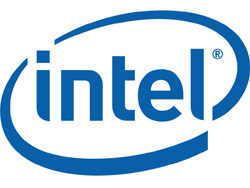A Detailed Look Into PSUs |
|
ATX, EPS, 80 PLUS Specifications
In PSUs there are some standards that are widely accepted by almost all manufacturers. In the following lines we are going to make a brief reference to three of the most recognized, up to date, specifications.ATX Specification

ATX (Advanced Technology Extended) is a motherboard form factor specification developed by Intel in 1995. In general it gives some guide lines in computer cases, motherboards and PSUs design. The first ATX specification released in late 1995 and defined three types of power connectors: a) four pin Molex, b) four pin FDD connector and c) 20-pin Molex motherboard connector. This specification defined that most of PSU's power should be provided on 5V and 3.3V rails because those early times all electronic components were powered by these two rails and 12V were used only for fans and motors of peripheral devices. This original ATX specification remained almost unchanged until the year 2000.
From 2000 to current date many revisions were released with ATX 2.31, which released in 2007, being the latest. The main differences of ATX 2.31 with the previous (ATX 2.2) are the minimum efficiency recommendations that increased to 80% and the 12V minimum load requirement that was lowered. Also the absolute over current limit (240VA per rail) is no longer present, enabling 12V line to provide more than 20A per rail. However the last was usually ignored by the manufacturers since they usually set the OCP trigger point much higher than the stated 20A.
EPS Specification

Entry-Level Power Supply Specification (EPS), which is a derivative of ATX specification, was released for high end computers and entry-level servers. It was developed and released by the Server System Infrastructure forum. In order for a PSU to meet the EPS specification, it must have a 24 pin motherboard connector, an EPS (8-pin) connector and if its capacity is 700-800W one 4-pin 12V connectors and for capacities of over 850W two 4-pin 12V connectors. The current latest EPS specification is 2.92.
80 PLUS Specification

80 PLUS represents an organization that certifies PSUs that have over 80% efficiency at 20, 50 and 100% of maximum rated load and a power factor of 0.9 or greater at 100% load (for Bronze, Silver and Gold certifications, the power factor must be 0.9 or greater on all three load levels. Also the newest Platinum level requires 0.95 or better power factor for servers).
The first market ready PSU was created in February 2005 by Seasonic. At first the only certification level was 80 PLUS but in the first quarter of 2008 the standards were revised and Bronze, Silver and Gold efficiency level certifications were added. The most recent efficiency level certification (Platinum) was added in October 2009. Personally I am looking forward to see what will be the name for the next certification level (Diamond?).
We must stress here that 80 Plus certifies non-redundant PSUs at 115VAC and 230VAC are used only for redundant PSUs (used in servers, data centers). So reviewers that test with 230VAC input officially cannot verify the certification level of the, under review, PSU. Also with 230VAC input the efficiency is increased by 0.5-1.5% compared to 115VAC efficiency levels. below you will find a table with all efficiency level certifications.
| 80 PLUS Certification | 115V Internal Non-Redundant | 230V Internal Redundant | ||||
|---|---|---|---|---|---|---|
| % of Rated Load | 20% | 50% | 100% | 20% | 50% | 100% |
| 80 PLUS | 80% | 80% | 80% | N/A | ||
| 80 PLUS Bronze | 82% | 85% | 82% | 81% | 85% | 81% |
| 80 PLUS Silver | 85% | 88% | 85% | 85% | 89% | 85% |
| 80 PLUS Gold | 87% | 90% | 87% | 88% | 92% | 88% |
| 80 PLUS Platinum | 90% | 92% | 89% | 90% | 94% | 91% |
Apr 23rd, 2024 16:49 EDT
change timezone
Latest GPU Drivers
New Forum Posts
- No POST, and no display (8)
- CPB Enabled Boot Loop (6)
- Aida64 cache mem OC (5)
- hacked (72)
- FINAL FANTASY XIV: Dawntrail Official Benchmark (70)
- Meta Horizon OS (6)
- windows 11 (4)
- Which new games will you be buying? (299)
- need help with motherboard/ ram compability certainty (5)
- My computer setup - Request for opinions (11)
Popular Reviews
- Horizon Forbidden West Performance Benchmark Review - 30 GPUs Tested
- Fractal Design Terra Review
- Corsair 2000D Airflow Review
- Thermalright Phantom Spirit 120 EVO Review
- Minisforum EliteMini UM780 XTX (AMD Ryzen 7 7840HS) Review
- ASUS GeForce RTX 4090 STRIX OC Review
- NVIDIA GeForce RTX 4090 Founders Edition Review - Impressive Performance
- ASUS GeForce RTX 4090 Matrix Platinum Review - The RTX 4090 Ti
- Creative Pebble X Plus Review
- MSI GeForce RTX 4090 Gaming X Trio Review
Controversial News Posts
- Sony PlayStation 5 Pro Specifications Confirmed, Console Arrives Before Holidays (116)
- NVIDIA Points Intel Raptor Lake CPU Users to Get Help from Intel Amid System Instability Issues (105)
- AMD "Strix Halo" Zen 5 Mobile Processor Pictured: Chiplet-based, Uses 256-bit LPDDR5X (101)
- US Government Wants Nuclear Plants to Offload AI Data Center Expansion (98)
- Windows 10 Security Updates to Cost $61 After 2025, $427 by 2028 (84)
- Developers of Outpost Infinity Siege Recommend Underclocking i9-13900K and i9-14900K for Stability on Machines with RTX 4090 (84)
- TechPowerUp Hiring: Reviewers Wanted for Motherboards, Laptops, Gaming Handhelds and Prebuilt Desktops (74)
- Intel Realizes the Only Way to Save x86 is to Democratize it, Reopens x86 IP Licensing (70)